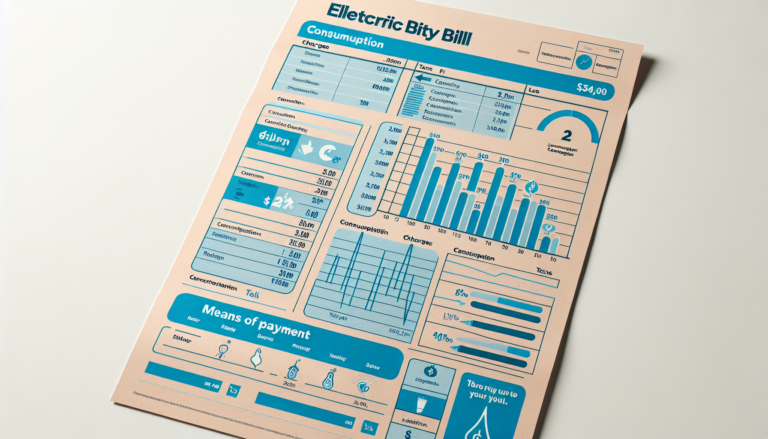Essential Tips for Financial Success
[ad_1]
In today’s fast-paced world, budgeting has emerged as a critical foundation for achieving financial stability and success. With the complexity of modern financial systems and the variety of needs and expenses individuals face—from utilities and meal planning to savings and emergency funds—it has become paramount to possess a solid understanding of how to effectively manage income and expenses. Mastering the art of budgeting not only helps in keeping track of where your money goes but also in ensuring that financial goals are met with precision and discipline. This is crucial for anyone looking to secure their financial future, whether they’re managing household expenses, navigating student life with discounts and budgeting loans, or planning for retirement.
The journey towards financial success through budgeting encompasses several key steps, beginning with a thorough understanding of one’s income and expenses. The article will discuss various budgeting methods, including but not limited to the 50/30/20 rule, zero-based budgeting, and how to utilize budgeting apps and tools effectively.
Moreover, it will guide readers on setting achievable financial goals, creating a budget plan that accommodates both fixed expenses and savings, and utilizing budgeting templates and worksheets for meticulous planning. Additionally, strategic tips for maintaining your budget, such as how to budget money wisely with meal planning and how to manage unexpected expenses with an emergency fund, will be provided to ensure long-term budgeting success. Through this roadmap, readers will gain the necessary insights and strategies to navigate their financial journey with confidence.
Understanding Your Income and Expenses
Calculating Net Income
Net income plays a crucial role in personal and business financial planning. For individuals, net income is the amount of money one has available after all deductions, such as taxes and retirement contributions, are subtracted from the gross income . This figure is essential as it determines the actual amount available for spending and saving. Businesses also rely on net income to gauge profitability, calculated by subtracting total expenses, including taxes and cost of goods sold, from total revenue . A positive net income indicates profitability, whereas a negative net income, or net loss, signifies that expenses have surpassed revenues .
Listing All Expenses
Creating a comprehensive budget requires a detailed listing of all monthly expenses, which can be categorized into fixed and variable expenses . Fixed expenses, such as rent, insurance, and subscription services, are predictable and constant each month, making them easier to manage . On the other hand, variable expenses, including groceries, utilities, and entertainment, can fluctuate and require careful tracking to ensure they do not exceed the net income .
Utilities often represent a significant portion of monthly expenses. Households in the U.S. spent an average of $3,948 on utilities in 2023, covering essentials like natural gas, electricity, water, and sewer services . These expenses can vary by season, particularly heating costs during winter, which can be mitigated by using energy-efficient devices or budget billing plans .
Transportation costs are another critical category, encompassing car payments, fuel, public transit fares, and routine maintenance . For families, child and pet care are necessary expenses that include daycare fees or pet sitting services, which should be averaged over the year for a more accurate budget forecast .
Healthcare costs also need careful consideration, including premiums for insurance plans and out-of-pocket expenses like copays or deductibles . Setting aside a monthly amount for these can prevent financial strain during emergencies.
Finally, a well-rounded budget accounts for savings and debt repayment. Financial experts often recommend the 50/30/20 rule, where 20% of net income should go towards savings . This helps in building an emergency fund or saving for future financial goals, ensuring financial stability and security.
Choosing the Right Budgeting Method
50/30/20 Rule
The 50/30/20 rule, popularized by U.S. Senator Elizabeth Warren, simplifies budget management by dividing after-tax income into three categories: 50% for needs, 30% for wants, and 20% for savings . This method encourages individuals to prioritize essential expenses and savings, ensuring financial stability. It is especially beneficial for those new to budgeting, as it provides a clear framework for allocating income and monitoring spending. Adjustments can be made to the percentage allocations to better suit individual financial situations and goals .
Envelope System
The envelope system is a practical approach to budgeting that involves dividing cash into envelopes, each labeled for different spending categories . Once the allocated money in an envelope is spent, no further spending is allowed in that category until the next budget period. This method helps individuals control impulse spending and gain a clearer understanding of their financial priorities. For those who prefer digital solutions, this system can be adapted using mobile budgeting apps, which replicate the envelope system electronically, allowing for real-time tracking of expenses .
Zero-Based Budgeting
Zero-based budgeting requires that every dollar of income is assigned a specific purpose, ensuring no funds are left unallocated . This method is highly detailed and involves a lot of preparation each month, making it suitable for those who desire complete control over their finances. It encourages accountability and careful planning, as each expense must be justified and aligned with financial goals . However, it can be time-consuming and may not be ideal for individuals with unpredictable schedules or those who prefer a more flexible budgeting approach .
Setting Financial Goals
Short-Term Goals
Short-term financial goals are essential stepping stones towards achieving long-term aspirations. They are typically achievable within one year and include establishing an emergency fund, saving for a significant purchase like a new TV or upgraded appliance, or paying off a small amount of debt. The liquidity of your savings is crucial for these goals, as easy access to funds is necessary. Suitable financial instruments for short-term savings might include savings accounts, money market accounts, or certificate of deposit (CD) accounts, which, while not offering the returns of investment accounts, provide higher interest rates than traditional savings and are FDIC-insured .
Long-Term Goals
Long-term financial goals, on the other hand, require a more extended period to achieve, often five years or more, and involve significant life plans like buying a home, saving for retirement, or eliminating substantial debts. These goals necessitate a strategic approach, including investing in less liquid assets such as stocks, mutual funds, or real estate, which generally yield higher returns. For these investments, considering tax-advantaged accounts like a 401(k) or an IRA for retirement or a 529 plan for college savings can be beneficial .
Long-term goals also include improving your financial stability by paying off mortgages or credit cards, aiming for a good credit score to secure favorable loan rates, and planning for future life events like retirement or children’s education. It is advisable to set intermediary goals to maintain focus and motivation, regularly review your financial progress, and adjust plans as necessary to stay on track towards achieving these significant milestones .
Both short-term and long-term financial goals are integral to a comprehensive financial strategy. They require regular evaluation and adjustment to reflect changes in one’s financial situation and life circumstances. By setting these goals, individuals can ensure they are prepared for both the expected and unexpected financial demands of the future.
Tips for Maintaining Your Budget
Tracking Progress Regularly
Maintaining a budget effectively requires regular monitoring of financial activities. By tracking expenses on a consistent basis, individuals gain a clear understanding of their spending patterns, which helps in making informed adjustments to their budget . Utilizing budgeting tools, whether digital apps linked to bank accounts or manual tracking systems, allows for an accurate account of all transactions. This way, one can categorize expenses into fixed and variable costs, providing insight into areas where spending can be optimized .
Automating Savings
Automating savings is a strategic approach to ensure that a portion of income is directly transferred to savings accounts, thus preventing the temptation to spend it. Setting up automatic transfers from checking to savings accounts, either within the same bank or across different banks, simplifies the process of saving. For instance, arranging with one’s employer to allocate a part of the paycheck directly into a high-yield savings account helps in accumulating savings without manual intervention .
Moreover, banks often provide options for setting up recurring transfers, which can be timed around payday to ensure that money is saved before it is spent . Utilizing apps that round up transactions to the nearest dollar and transfer the difference to savings accounts can also incrementally increase one’s savings without significant impact on daily finances .
By incorporating these methods into their financial routine, individuals can maintain their budget more effectively and work towards achieving their financial goals with discipline and consistency.
Conclusion
Throughout the exploration of effective budgeting strategies, the critical importance of understanding one’s income and expenses, choosing the right budgeting method, setting attainable financial goals, and maintaining discipline in financial practices has been underscored. These foundational aspects are indispensable for anyone aspiring to achieve financial solidity and success. From the discussion, it’s clear that mastering budgeting is not just about tracking where every dollar goes but also about making strategic decisions that align with both immediate needs and long-term objectives. The guidance provided on utilizing various budgeting methods and tools, along with practical tips for saving and expense management, offers a roadmap to financial empowerment.
Reflecting on the journey towards financial proficiency, it is evident that budgeting is a dynamic process that requires regular assessment and adjustment to be truly effective. The potential impact of diligently applying the discussed budgeting strategies stretches beyond mere financial stability; it fosters a sense of confidence and control over one’s financial future. With the encouragement to regularly review and refine financial goals, this article aims to inspire continued growth and adjustment in personal financial planning. Embrace these principles, and step into a future where financial challenges are met with informed strategies and disciplined action, ensuring a path towards achieving and surpassing your financial aspirations.
[ad_2]
Source link





